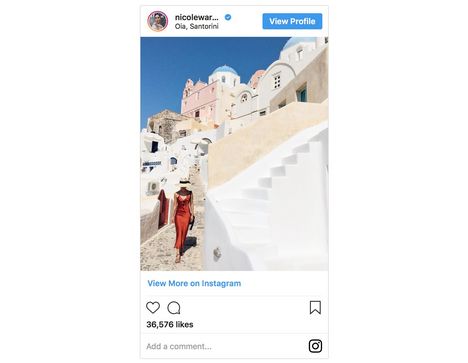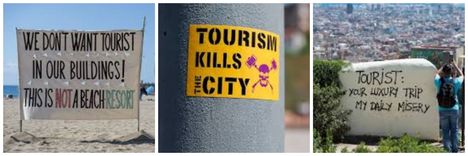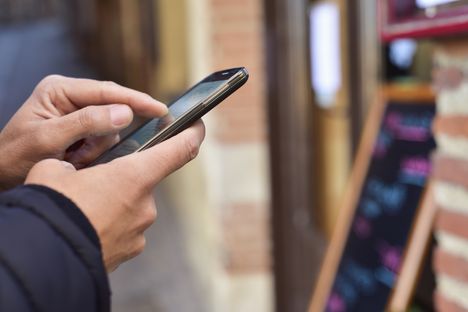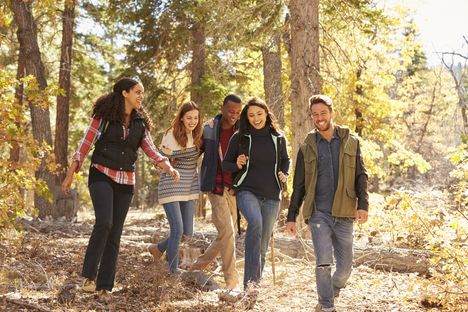An Overview of Tribe Global's Top Travel Insights from our Experts
Mar 1, 2019
Last year saw the launch of Tribe Global’s Travelations initiative which was created for travel marketers seeking global perspective, actionable insights and business advantage. Due to Tribe Global agencies having expertise in the travel/tourism industry, they have come together to not only work on travel projects, but to provide travel marketers with the latest trends and insights.
We have highlighted some of the key trends from the past year that the Tribe will continue to monitor in 2019.
Influencers
Even without hard sales numbers, hospitality groups say hosting social media-savvy guests is an essential part of marketing to today's travellers. According to our guest blog from Malcolm Roughhead at VisitScotland, research shows the strength of social media influencers and their power to drive conversations and engagement as well as deliver inspiring content, with many millennials trusting influencers nearly as much as they trust their friends and family.
The enthusiasm from influencer followers is obvious, but what is less clear is how these followers actually go through the customer journey. There are tools such as Instagram Stories swipe-up function which makes it relatively easy to track fashion and beauty items bought by followers from an influencers post. According to Fashionista.com, young shoppers prefer to buy items after seeing them worn in context, however the process for travel is much more complex. Most people don’t impulse buy flights and accommodation on a late-night scroll through Instagram like they might do with a jumper or a pair of trainers. It’s a completely different customer journey.
“Influencers at the moment serve as the top-of-the-funnel ‘discovery’ tool for us, as the path to purchase can take months when people are booking a trip” – Ann Marie Noell, Influencer relations manager at luxury hotel club Mr & Mrs Smith.
Tribe Member agency Sing Comunica in Brazil found that explaining to clients that traditional marketing is no longer the only way to talk to their audience is a task for communication agencies. Influencers are fundamental in the dissemination of the brands key messages for potential consumers, who often "follow" digital influencers opinions and references.
Travelers need to see something that feels "less structured, less corporate, more organic," and Instagram is one of the first places they look. Here’s the data to back this up. According to MMGY Global's 2017 Portrait of American Travellers, more than a third of travellers reported choosing a destination based partially or primarily on social media research, and 58% of millennial travellers documented their trips on social themselves.

This ripple effect might help explain how certain cities go from under-the-radar to suddenly-everywhere with seemingly little promotion. Take Lisbon for example, which was in the midst of a financial crisis that nearly crippled its economy less than a decade ago. Since then, Lisbon has become a hotspot for foreigners, with tourism climbing to new record highs every year since 2011. According to Airbnb's 2018 Travel Trends report, where, per MyDomaine, "every tastemaker" vacationed this past summer — landed in the 10th spot among the most-booked cities in the world, behind obvious contenders like New York City and Paris. Mykonos, another highly “Instagrammed” destination, also earned a call-out with a 173% increase in bookings for the first half of 2018 compared to 2017.
This brings us to our next trend.
Overtourism
The most engagement that social media influencer Sara Escudero has seen came from her trip to Cinque Terre, Italy. This is not surprising considering the colourful beaches and breath-taking villages. But unfortunately, these factors have brought the UNESCO World Heritage sites and ruins in the city to the brink of overcrowding in the summer which lead the president to cap tourism to 1.5 million people per year in 2016, a full million fewer than the previous year.
Stories of tourism congestion and images of anti-tourism graffiti in places like Barcelona, Amsterdam and Venice grabbed European media headlines a few years ago like never before. Peak season congestion in many tourism hotspots worldwide is threatening to destroy not just the visitor experience, but also the natural and cultural environment. So, is there still time to live up to the United Nations World Tourism Organization’s laudable aim of developing sustainable tourism around the globe?

Our French Member agency Dagré have noticed a rising interest in eco-tourism from French travellers. They believe that travellers in France are now starting to realise and begin to question the hard impact of tourism on the natural environment. There is now more of a global focus on the protection and the consideration of the environment and culture of popular destinations. Eco-tourists have different objectives than other travellers. They aim to protect the destination’s heritage, to fight against poverty by participating in the local economy, to reduce waste and more.
Find out how other destinations are responding and what NTOs and DMOs should focus on to develop truly sustainable tourism here .
The importance of travel reviews
Our Manchester based Member agency BJL’s own research revealed that 46% of the UK population wouldn't make a travel choice without consulting reviews.
According to TripAdvisor, it is the biggest travel website in the world: it collects more than 500 million travellers’ reviews and it compares more than 200 reservation websites in order to help tourists find the travel solution that suits them the most. Because of its popularity, TripAdvisor is changing the entire restaurant and hotel industry: having good reviews on TripAdvisor is one of the most important and attractive features for a business, because it can decisively influence a customer’s choices.

With the power of social media influencers, it is no wonder that today’s society place a lot of importance on travel reviews, whether that be for hotel or restaurant recommendations or which cultural activities should be at the top of their to-do list. You can read more on review-based tourism here .
An increasingly savvy audience
According to a 2016 Harris Group Study, 72% of Gen Y young adults value experiences over owning material things.
A GfK research project for AirBnB revealed that the majority of 18-34-year olds in the UK, US and China consider travel a higher priority than saving for a home.
The first place that a traveller will research a trip will be online. They will talk to people, follow travel influencers, get involved in discussion groups and get as much information as possible. Vânia Gracio, Owner of Sing Comunica, explains that having a good infrastructure to meet the different traveller profiles is essential for travel brands.
Tony Evans, Head of Operations at BJL believes that in a world of growing air connectivity, where it has never been easier for the discerning traveller to choose their holiday destination, competition is fierce. Into the mix is the changing tastes of visitors.
The so-called “Instagram generation” are seeking a visitor experience that is both immersive and unique – and in particular, one that can be captured on camera and broadcast to the delight (and envy!) of their social media followers.

However, in amongst all of this, one word is key – authenticity.
Malcolm Roughhead explains that consumers are searching for authentic experiences and the ability to immerse themselves in the local culture. They are looking to combine the traditional tourism experience with something special that takes them off the beaten track.
VisitScotland’s insight team have highlighted this trend for several years. But what is meant by true authenticity, when the word itself is a fluid concept and subject to individual interpretation? You can read more here .
Luxury Tourism
Luxury tourism is another travel trend that is growing. Our Member agency, The Blueroom Project in Madrid, carried out research to discover the top trends in luxury travel. With the results of their research they found that the luxury tourist is between the ages of 40-50 years old, with high purchasing power, earning more than €150,000 annually, and taking a minimum of 4 trips per year.
54% of luxury travellers spend between €5,000 to €10,000 on each outing, although their budget can increase to €50,000 for special occasions.
In February last year, Sabre identified five trends to understand and analyse the future evolution of luxury tourism.
1. Self-centered luxury travellers will continue to look for authentic experiences that can be shared, as well as for products that enhance their well-being
2. Luxury travellers are now choosing less opulent goods/services
3. Increased environmental, society and health concerns
4. Increasing demands for extravagance
5. Tailor made luxury
You can find out more about these luxury trends here .

In conclusion, there are many trends that travel marketers need to consider, from influencers, “overtourism” and savvy travellers to review-based tourism and luxury tourism. Tribe Global’s Travelations written by travel marketing experts from around the world aim to give you a global perspective, actionable insights and business advantage. Stay tuned this year as the Tribe continue to research and provide new travel trends and insights for you!
Tribe Global is a network of over 30 independent agencies and business Partners working together with an overwhelming passion for solving client challenges creatively, with a commercial imperative. For examples of our deep Tribal travel/tourism experience, find us here .
To speak with any of our experienced Member agencies from around the world please email our International Coordinator, Elaine Miller: elaine.miller@tribeglobal.net .
We can hook you up with an agency on your vibe.







